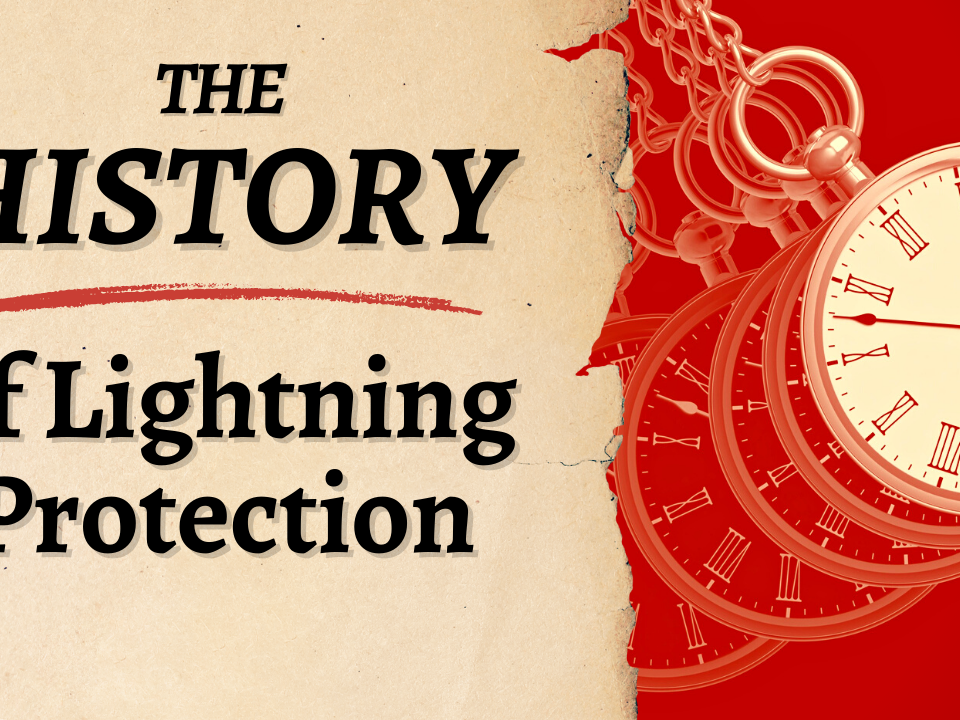- We Prevent Lightning Related Problems.
Lightning Strikes 911 Call Center, Leaving Public in a Frenzy
September 27, 2012DAS is Not an ESE
October 11, 2012Considering Lightning Protection as a Forefront to Construction
According to Underwriters Laboratories Inc. (UL), lightning accounts for more than one billion dollars annually in structural damage to buildings in the United States. But that does not include the billions of dollars that are lost due to downtime and liability when businesses are forced to shutdown to repair damages caused by lightning strikes.
When building a new facility lightning protection should be considered from the beginning, not as an afterthought. You must think with the same strategy as if you were buying life insurance – buying life insurance as an afterthought is not an option. After determining that lightning protection is a necessity from the beginning, you must then answer two very important questions: “How much lightning protection do I need?” and “How much am I willing to spend?” But these two questions are generally answered by two sets of people. “How much lightning protection do I need for this facility or site?” should be answered by an experienced technical engineer. However, only you and your company can answer “How much am I willing to spend on lightning protection?” The truth is, these costs should be factored in as part of construction of the facility.
When it comes to the construction of facilities, whether it be new construction or renovations, lightning protection products is an integral part. It is important that construction engineers managing these projects take a closer look at the damage lightning can cause in terms of structure and productivity disruption. In this tight economy, companies are forced to do more with less by maximizing all levels of operations. Why not maximize risk management during construction and implement proper lightning protection to prevent future loss of productivity, downtime and equipment damage?
Countless facilities have taken direct lightning strikes resulting in substantial amounts of damage to equipment. Some facilities take multiple hits from lightning repeatedly and then are required to not only repair the damages each time, but also spend thousands of dollars in ancillary equipment to meet government safety requirements. Investing in the right lightning protection and prevention systems at the very beginning can diminish the expenses incurred by lightning strikes. The Dissipation Array System™ (DAS™), designed by Lightning Eliminators & Consultants, Inc. (LEC), is designed to prevent direct lightning strikes within the protected area by reducing the electric field to below lightning-collection levels, within the protected area. As a result, DAS helps to prevent downtime and loss of assets, while increasing personnel safety. Since 1971, the DAS has maintained a success rate over 99%.
Lightning Protection
At LEC, when determining which lightning protection system is right for a facility, our experienced engineers will thoroughly perform a scientific evaluation of the site’s exposure and vulnerability to lightning by reviewing past lightning events, examining any existing lightning protection systems, reviewing any structures, electrical, data and communication systems, as well as performing ground testing. Once the areas of concern are identified, a site-specific evaluation will be performed by gathering data on local storm, lightning and other environmental variables. When it comes to existing facilities, structural designs and restrictions including aesthetic, safety, access and maintenance requirements, corrosive elements and site topography will also be carefully examined. LEC determines the overall cost of a proper lightning protection and prevention system by the scope and complexity of work based on the report of the completed site evaluation. Contact us to set up a site evaluation with your construction engineer.


